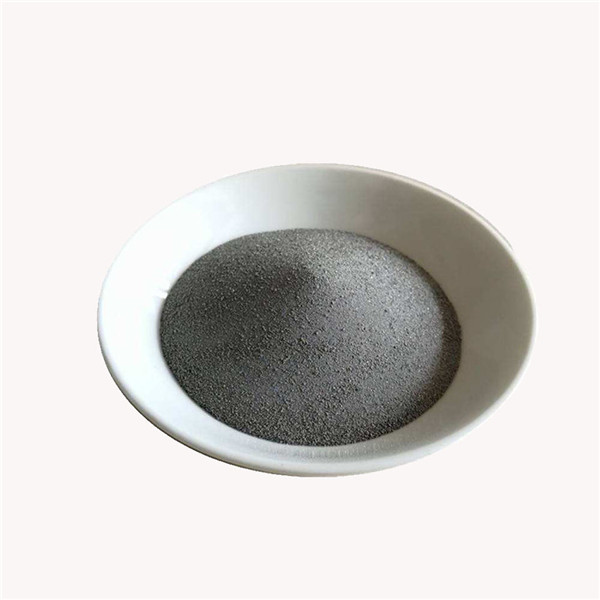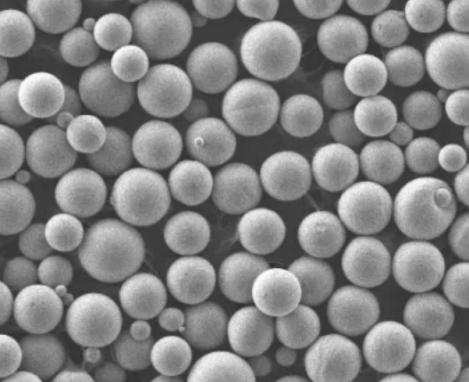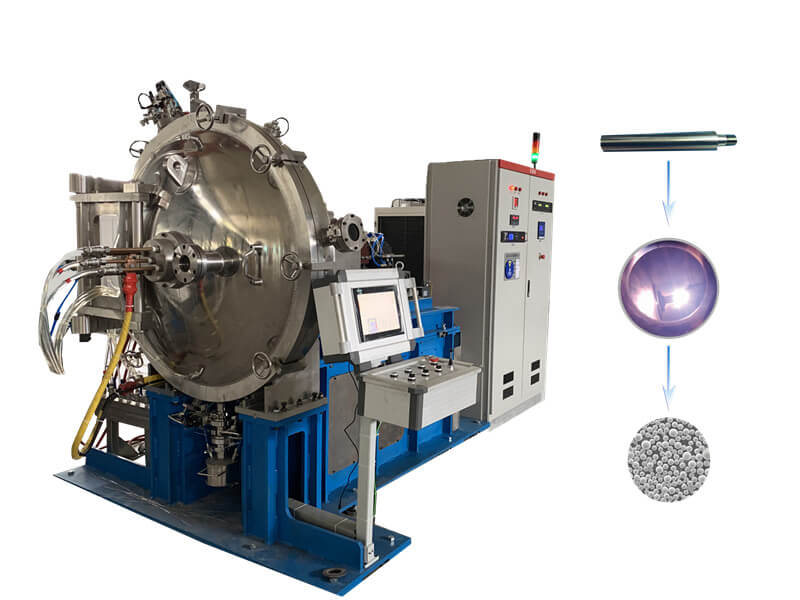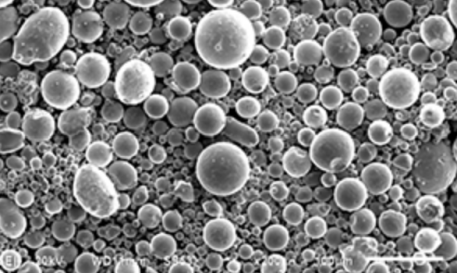Table of Contents
Toggle1. Introduction
In recent years, 3D printing has revolutionized manufacturing processes across various industries. One of the key components enabling this revolution is 3D printing metal powder. As the demand for high-quality metal powders continues to rise, the role of 3D printing metal powder manufacturers becomes increasingly crucial. This article explores the world of 3D printing metal powder manufacturing, its importance, and the factors to consider when choosing a reliable manufacturer.
2. Understanding 3D Printing Metal Powder
2.1 What is 3D Printing Metal Powder?
3D printing metal powder manufacturer said that 3D printing metal powder refers to finely ground metal particles used as the raw material for additive manufacturing processes. These powders are specially engineered to possess specific properties, such as particle size distribution, chemical composition, and flowability, which are critical for successful 3D printing.
2.2 Importance of High-Quality Metal Powder in 3D Printing
3D printing metal powder manufacturer said that High-quality metal powder is paramount for achieving precise and reliable 3D printed parts. The characteristics of the powder directly impact the print quality, mechanical properties, and overall performance of the final product. By using top-notch metal powders, manufacturers can ensure dimensional accuracy, excellent surface finish, and mechanical integrity in their 3D printed components.

3. The Role of a 3D Printing Metal Powder Manufacturer
A 3D printing metal powder manufacturer plays a pivotal role in the additive manufacturing industry by providing high-quality powders for various applications. Let’s delve into the key aspects of their operations.
3.1 Manufacturing Process
3D printing metal powder manufacturers employ advanced techniques to produce metal powders suitable for 3D printing. The process typically involves atomization, where molten metal is rapidly cooled, resulting in fine powder particles. This method ensures uniform particle size and composition, essential for achieving consistent printing results.
3.2 Quality Control Measures
3D printing metal powder manufacturer said that To maintain the highest quality standards, metal powder manufacturers implement rigorous quality control measures throughout the production process. These include thorough testing for particle size distribution, chemical composition, flowability, and impurities. Stringent quality control ensures that the metal powders meet the specifications required for successful 3D printing.
4. Types of Metal Powders Used in 3D Printing
Various metals and alloys are used in 3D printing, each offering unique properties suitable for specific applications. Here are some commonly used metal powders:
4.1 Titanium Powder
3D printing metal powder manufacturer said that Titanium powder is widely utilized in aerospace, medical, and automotive industries due to its excellent strength-to-weight ratio, corrosion resistance, and biocompatibility. It finds applications in the production of lightweight structural components, medical implants, and high-performance parts.
4.2 Aluminum Powder
Aluminum powder is known for its lightweight properties and high thermal conductivity. It is frequently used in automotive manufacturing, aerospace components, and consumer electronics. Aluminum 3D printed parts are valued for their strength, durability, and resistance to corrosion.
4.3 Stainless Steel Powder
3D printing metal powder manufacturer said that Stainless steel powders offer exceptional mechanical properties, corrosion resistance, and versatility. They find applications in various industries, including healthcare, consumer goods, and energy. Stainless steel parts produced through 3D printing exhibit high strength, excellent surface finish, and durability.
4.4 Nickel Powder
Nickel powder is widely used for its excellent heat resistance, corrosion resistance, and electrical conductivity. It is commonly employed in the aerospace and electronics industries, where high-temperature performance and electrical properties are crucial. Nickel-based alloys provide exceptional strength and resistance to wear, making them ideal for demanding applications.

5. Factors to Consider When Choosing a Metal Powder Manufacturer
When selecting a 3D printing metal powder manufacturer, several factors should be taken into account to ensure optimal results:
5.1 Material Purity
The purity of the metal powder directly influences the properties of the printed parts. A reputable manufacturer should provide powders with high material purity, minimizing the presence of impurities that could compromise the final product’s integrity.
5.2 Particle Size Distribution
3D printing metal powder manufacturer said that Uniform particle size distribution is crucial for achieving consistent print quality. A manufacturer capable of providing powders with tight particle size distributions ensures that the printed parts meet the desired specifications and exhibit excellent mechanical properties.
5.3 Powder Quality Standards
Manufacturers adhering to strict quality standards demonstrate their commitment to producing reliable and high-performance metal powders. Certifications such as ISO 9001 ensure that the manufacturing processes meet rigorous quality management systems, leading to consistent product quality.
5.4 Customization and Specialty Powders
3D printing metal powder manufacturer said that Some applications may require specific powder compositions or properties. A manufacturer that offers customization options and specializes in producing powders tailored to unique requirements can provide optimal solutions for complex 3D printing projects.
5.5 Cost and Lead Time
Cost and lead time are essential considerations when choosing a metal powder manufacturer. It is crucial to find a balance between competitive pricing and timely delivery without compromising on powder quality.

6. Advancements and Innovations in 3D Printing Metal Powders
The field of 3D printing metal powders is continuously advancing, leading to improved properties and expanded capabilities. Some noteworthy advancements include:
6.1 Alloy Development
3D printing metal powder manufacturer said that Researchers and manufacturers are constantly exploring new alloy compositions to enhance the properties of 3D printed parts. By carefully selecting and fine-tuning alloy compositions, it is possible to achieve superior mechanical strength, thermal properties, and resistance to various environments.
6.2 Enhanced Powder Properties
Improvements in powder characteristics, such as flowability, density, and sphericity, contribute to more efficient and reliable 3D printing processes. Innovations in powder production techniques allow for better control over these properties, resulting in enhanced printability and overall part quality.
6.3 Sustainability and Environmental Impact
3D printing metal powder manufacturer said that The 3D printing industry, including metal powder manufacturing, is increasingly focusing on sustainability. Efforts are being made to reduce waste, energy consumption, and the environmental impact of the manufacturing processes. Recycling and reusing metal powders are becoming more prevalent, promoting a more eco-friendly approach to additive manufacturing.

7. Applications of 3D Printing Metal Powders
3D printing metal powders find applications in various industries, enabling the production of complex and customized components. Some notable application areas include:
7.1 Aerospace and Defense
3D printing metal powder manufacturer said that The aerospace and defense industries leverage 3D printing metal powders to produce lightweight, high-performance parts with intricate geometries. Metal powders enable the manufacturing of aircraft components, rocket engines, turbine blades, and other critical parts that require exceptional strength, durability, and precision.
7.2 Automotive Industry
In the automotive sector, 3D printing metal powders are used to create lightweight parts, optimize fuel efficiency, and enhance vehicle performance. Engine components, chassis parts, and exhaust systems benefit from the design freedom and material properties offered by metal powders, resulting in improved overall vehicle performance.
7.3 Medical and Healthcare
3D printing metal powder manufacturer said that 3D printing metal powders have revolutionized the medical and healthcare industries by enabling the production of patient-specific implants, prosthetics, and surgical instruments. Metal powders with biocompatible properties, such as titanium, are extensively used for dental implants, orthopedic implants, and cranial implants, offering personalized solutions and improved patient outcomes.
7.4 Manufacturing and Industrial Sectors
3D printing metal powder manufacturer said that 3D printing metal powders have found applications in various manufacturing and industrial sectors. They are used to produce molds, tooling inserts, jigs, and fixtures with complex geometries, reducing lead times and costs associated with traditional manufacturing methods. Metal powders allow for rapid prototyping, customization, and on-demand production, offering greater flexibility to manufacturers.

8. Future Prospects of 3D Printing Metal Powder Manufacturing
The future of 3D printing metal powder manufacturing looks promising, with several advancements and opportunities on the horizon.
8.1 Emerging Technologies
Emerging technologies, such as binder jetting and laser powder bed fusion, continue to improve the efficiency and capabilities of 3D printing with metal powders. These technologies enable faster printing speeds, higher resolution, and increased material options, opening doors to new applications and industries.
8.2 Market Growth and Demand
The market for 3D printing metal powders is expected to witness substantial growth in the coming years. As the adoption of additive manufacturing expands across industries, the demand for high-quality metal powders will continue to rise. Manufacturers investing in research and development, process optimization, and expanding their product portfolios stand to benefit from this growing market.
9. Conclusion
3D printing metal powders play a vital role in the additive manufacturing industry, enabling the production of complex and high-performance components. Choosing a reliable 3D printing metal powder manufacturer is crucial for ensuring the quality, consistency, and success of 3D printing projects. By considering factors such as material purity, particle size distribution, quality standards, customization options, and cost, manufacturers can make informed decisions and achieve optimal results. With advancements and innovations in metal powder properties, as well as expanding applications in aerospace, automotive, medical, and industrial sectors, the future of 3D printing metal powder manufacturing holds tremendous potential.
FAQs
1. Can any metal be used as a 3D printing metal powder?
While many metals can be used for 3D printing, the selection depends on the specific requirements of the application. Common metals used include titanium, aluminum, stainless steel, and nickel. Each metal offers unique properties suitable for different industries and applications.
2. How does the quality of metal powder affect 3D printed parts?
The quality of metal powder significantly impacts the final quality of 3D printed parts. High-quality metal powders with uniform particle size distribution, controlled chemistry, and low impurities result in printed parts with better mechanical properties, dimensional accuracy, and surface finish.
3. Are there any environmentally friendly practices in 3D printing metal powder manufacturing?
Yes, the 3D printing industry is actively working towards sustainability and reducing its environmental impact. Recycling and reusing metal powders, optimizing energy consumption during production, and implementing eco-friendly manufacturing processes are some of the practices being adopted to minimize waste and promote environmental responsibility.
4. How does 3D printing with metal powders benefit the aerospace industry?
3D printing with metal powders offers numerous benefits to the aerospace industry. It allows for the production of lightweight components, reducing fuel consumption and improving overall aircraft performance. Additionally, 3D printing enables the creation of complex geometries and customization, leading to optimized designs and faster prototyping.
5. Can metal powders be customized for specific applications?
Yes, metal powders can be customized to meet specific application requirements. Manufacturers specializing in 3D printing metal powders often offer customization options, allowing customers to tailor the powder composition, particle size, and other properties to achieve desired results in their specific applications.






